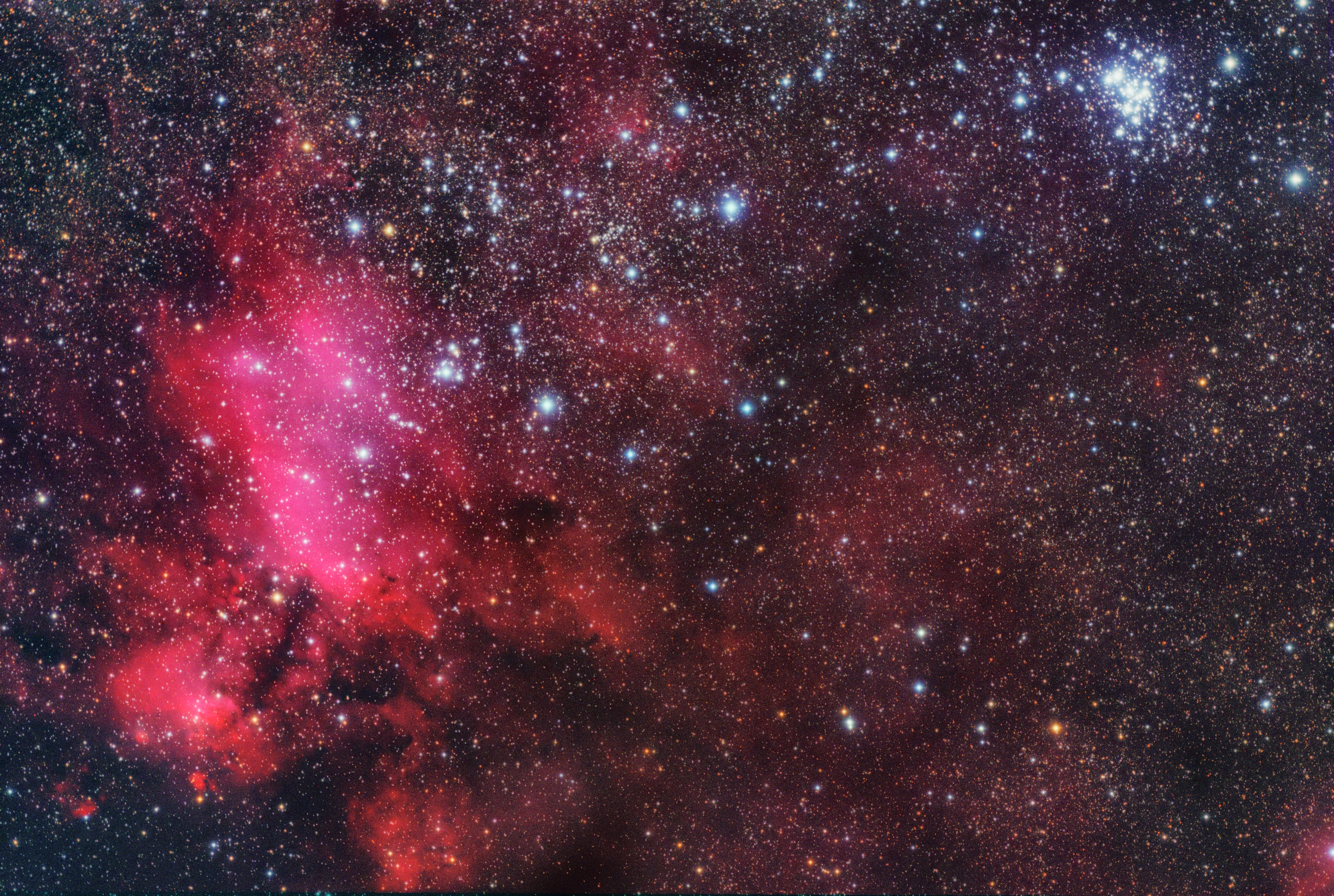HD 152408 on:
[Wikipedia]
[Google]
[Amazon]
 HD 152408, also known as WR 79a, is a Wolf-Rayet
HD 152408, also known as WR 79a, is a Wolf-Rayet
 HD 152408, also known as WR 79a, is a Wolf-Rayet
HD 152408, also known as WR 79a, is a Wolf-Rayet star
A star is an astronomical object comprising a luminous spheroid of plasma (physics), plasma held together by its gravity. The List of nearest stars and brown dwarfs, nearest star to Earth is the Sun. Many other stars are visible to the naked ...
located in the constellation
A constellation is an area on the celestial sphere in which a group of visible stars forms Asterism (astronomy), a perceived pattern or outline, typically representing an animal, mythological subject, or inanimate object.
The origins of the e ...
Scorpius
Scorpius is a zodiac constellation located in the Southern celestial hemisphere, where it sits near the center of the Milky Way, between Libra to the west and Sagittarius to the east. Scorpius is an ancient constellation that pre-dates the Gre ...
, close to the galactic plane
The galactic plane is the plane on which the majority of a disk-shaped galaxy's mass lies. The directions perpendicular to the galactic plane point to the galactic poles. In actual usage, the terms ''galactic plane'' and ''galactic poles'' usuall ...
. Its distance is around 2,020 parsecs (6,500 lightyears
A light-year, alternatively spelled light year, is a large unit of length used to express astronomical distances and is equivalent to about 9.46 trillion kilometers (), or 5.88 trillion miles ().One trillion here is taken to be 1012 ...
) away from the Earth
Earth is the third planet from the Sun and the only astronomical object known to harbor life. While large volumes of water can be found throughout the Solar System, only Earth sustains liquid surface water. About 71% of Earth's surfa ...
.
HD 152408 lies in the north of the open cluster
An open cluster is a type of star cluster made of up to a few thousand stars that were formed from the same giant molecular cloud and have roughly the same age. More than 1,100 open clusters have been discovered within the Milky Way galaxy, and ...
NGC 6231
NGC 6231 (also known as Caldwell 76) is an open cluster in the southern sky located half a degrees north of Zeta Scorpii. NGC 6231 is part of a swath of young, bluish stars in the constellation Scorpius known as the Scorpius OB1 association. The ...
, the center of the OB association
In astronomy, stellar kinematics is the observational study or measurement of the kinematics or motions of stars through space.
Stellar kinematics encompasses the measurement of stellar velocities in the Milky Way and its satellites as well as t ...
Scorpius OB1; it is not clear whether it is a part of the association or not. With an apparent magnitude
Apparent magnitude () is a measure of the brightness of a star or other astronomical object observed from Earth. An object's apparent magnitude depends on its intrinsic luminosity, its distance from Earth, and any extinction of the object's li ...
of about 5.77, it is the third brightest Wolf-Rayet star. The other Wolf-Rayet stars that can be seen with the naked eye (although it can only be seen with the naked eye under excellent viewing conditions) are γ2 Velorum (WR 11), θ Muscae (WR 48), WR 22
WR 22, also known as V429 Carinae or HR 4188, is an eclipsing binary star system in the constellation Carina. The system contains a Wolf-Rayet (WR) star that is one of the most massive and most luminous stars known, and is also a bri ...
, WR 24 and HD 151932
HD 151932, also known as WR 78, is a Wolf-Rayet star located in the constellation Scorpius, close to the galactic plane. Its distance is around 1,300 parsecs (4,200 lightyears) away from the Earth. Despite being a blue-colored Wolf-Rayet ...
(WR 78).
HD 152408 is about 24 times as massive as the Sun
The Sun is the star at the center of the Solar System. It is a nearly perfect ball of hot plasma, heated to incandescence by nuclear fusion reactions in its core. The Sun radiates this energy mainly as light, ultraviolet, and infrared radi ...
. Like most extremely massive stars, it is losing mass via its stellar wind. The total rate of mass loss is / yr. With an effective temperature
The effective temperature of a body such as a star or planet is the temperature of a black body that would emit the same total amount of electromagnetic radiation. Effective temperature is often used as an estimate of a body's surface temperature ...
of , its bolometric luminosity
Luminosity is an absolute measure of radiated electromagnetic power (light), the radiant power emitted by a light-emitting object over time. In astronomy, luminosity is the total amount of electromagnetic energy emitted per unit of time by a s ...
is more than .
References
{{Stars of Scorpius Scorpius (constellation) Wolf–Rayet stars 082775 6272 152408 Durchmusterung objects